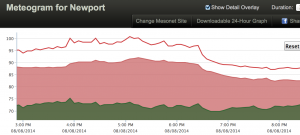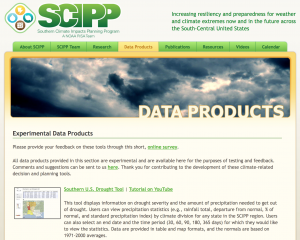With the shrill sound of cicadas pulsing around me, I began my walk along the path through the trees. Here it was Friday night in Ardmore. The day to follow was a full day devoted to beef cattle production at the 2014 Southern Plains Beef Symposium. This was a beautiful evening. It was hot and humid, yet it was a pleasant warmth. The grass was green and soils moist from recent rains.
As I walked, the sweat began to flow. Two miles and forty minutes later, I was warm, wet from perspiration, yet not fatigued, not overcome by the heat. At the end of my walk, close to 8:00 pm, the human Heat Index also referred to as the Apparent Temperature from the Newport Mesonet site was 87°F. That’s important because while I was sweating, I was still comfortable. Warm, yet far from being overcome by the heat. For me, when the Apparent Temperature gets into the upper 90s, I have to slow down and take it easy or suffer from the heat.
[Full Site: mesonet.org / Weather / Station Meteograms]
[App: Local / upper left corner "zig-zag" icon]


